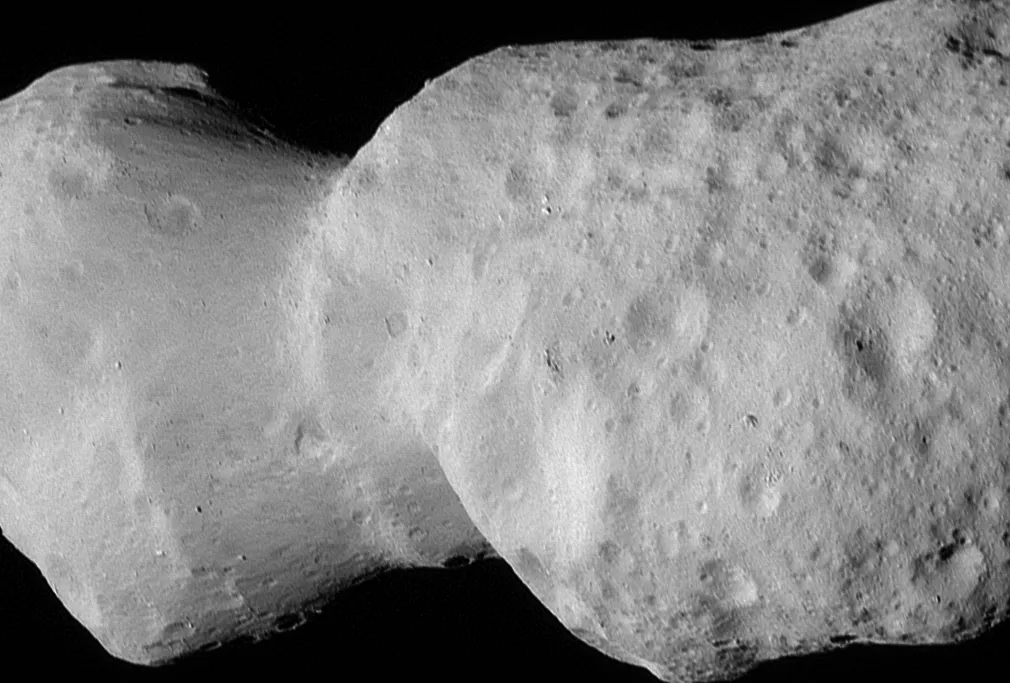NASA's Lucy Spacecraft Just Flew by a Strange, Peanut-Shaped Asteroid. See the New Images From the Approach
NASA’s Lucy Spacecraft Just Flew by a Strange, Peanut-Shaped Asteroid. See the New Images From the Approach
The close-up views of asteroid Donaldjohanson are a preview of what’s to come for Lucy on its 12-year quest to study Jupiter’s Trojan asteroids
The asteroid Donaldjohanson, captured by NASA's Lucy spacecraft on Sunday.
NASA / Goddard / SwRI / Johns Hopkins APL
NASA’s Lucy spacecraft has sent back photos of a distant space rock from its second asteroid flyby—and it looks pretty weird.
The asteroid Donaldjohanson—named after the paleoanthropologist who discovered the famous Lucy fossil in 1974—is shaped like a long peanut. The spacecraft zoomed by the asteroid at 30,000 miles per hour on Sunday, snapping images with its high-resolution Lucy Long-Range Reconnaissance Imager (L’LORRI) from 600 miles away.
By studying the images, NASA scientists confirmed a prediction that the oddly shaped asteroid was formed by a collision between two smaller space rocks. They estimate the 150-million-year-old object is around five miles long and two miles wide at its widest point, larger than their original estimates.“Asteroid Donaldjohanson has strikingly complicated geology,” says Hal Levison, the principal investigator for Lucy at the Southwest Research Institute, in a statement from NASA. “As we study the complex structures in detail, they will reveal important information about the building blocks and collisional processes that formed the planets in our solar system.”
Further details about the asteroid’s shape will be coming in over the next week, as astronomers downlink more of Lucy’s data. This will help give researchers a more complete picture of Donaldjohanson, especially since this first set of images does not capture the full asteroid in a single shot.
Lucy spacecraft snaps 1st-ever closeup views of asteroid Donaldjohanson
Watch on
Lucy was launched in 2021 to study Jupiter’s Trojan asteroids, which share the gas giant’s orbit around the sun. These little-known space rocks are remnants from the era that our solar system formed, and studying them will provide more information on that time. To date, no spacecraft has ever studied Jupiter’s Trojan asteroids up close.
But Donaldjohanson isn’t a Trojan asteroid. It’s in the main asteroid belt between Mars and Jupiter, which Lucy is passing through on its way to the Trojans. Before Donaldjohanson, the spacecraft had already observed the small asteroid Dinkinesh in 2023 and discovered it has a mini-moon. Like Donaldjohanson, Dinkinesh is a contact binary—it formed when two smaller objects collided.
Flying by Dinkinesh was “a systems test for the mission,” according to NASA’s statement, and the recent flight past Donaldjohanson was Lucy’s “full dress rehearsal.” These observations are laying the groundwork for when Lucy encounters its first Trojan target, Eurybates, and its satellite Queta in 2027.
“These early images of Donaldjohanson are again showing the tremendous capabilities of the Lucy spacecraft as an engine of discovery,” says Tom Statler, a program scientist for the Lucy mission, in the statement. “The potential to really open a new window into the history of our solar system when Lucy gets to the Trojan asteroids is immense.”
Over its 12-year mission, Lucy is expected to visit a record-breaking number of asteroids—three in the main belt and eight Trojans. Maybe it’ll spot a pecan-shaped asteroid next?
Get the latest stories in your inbox every weekday.


